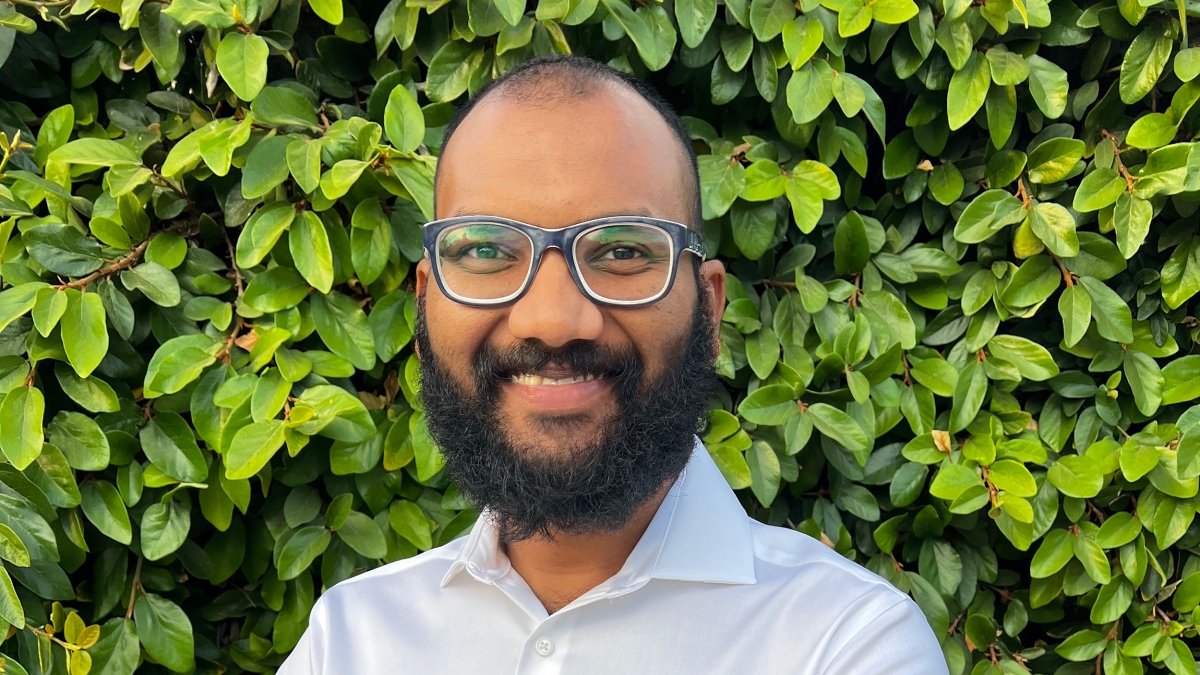Electrical engineering postdoc wins fellowship to fund research, assist startup

Electrical engineering postdoctoral researcher Rajasekhar Anguluri won a Mistletoe Research Fellowship from the Momental Foundation. The award provides funding for winners’ research activities at their universities and requires fellows to complete professional development by helping a startup develop their product. Photo courtesy Rajasekhar Anguluri
As an electrical engineering senior postdoctoral researcher in the School of Electrical, Computer and Energy Engineering, part of the Ira A. Fulton Schools of Engineering at Arizona State University, Rajasekhar Anguluri was looking to add an academic award to his resume when he came upon the Mistletoe Research Fellowship from the Momental Foundation.
At first, he wasn’t sure if the opportunity was the right fit for him.
“The award winners from previous years are mostly in sciences and applied engineering backgrounds, whereas I am a mathematical engineer who develops mathematical models and analyzes them with computation,” Anguluri said. “Then I realized I can bring my math skills to the table."
He believes those skills are why he ended up winning one of 30 awards out of more than 450 entrants, and he hopes it will boost him to the next phase of his career — earning a faculty position at a university.
The Mistletoe Research Fellowship includes funds to sponsor activities at the winner’s university and a required professional development component. The professional development consists of joining a team of three to four fellows under a mentor provided by the foundation to help a startup develop a product needing scientific or technological expertise.
“I’m happy I won the award, partially because this is the first time I applied for a fellowship and won it,” Anguluri said. “I’m also happy because I will be collaborating with entrepreneurs, doctoral students and other postdocs with diverse research backgrounds.”
He had sought out an award with academic prestige and found it in the Mistletoe Research Fellowship, which is specifically for advanced doctoral students and postdoctoral researchers in the United States and Singapore.
“It is not often postdocs win awards,” said electrical engineering Associate Professor Lalitha Sankar. “Such awards specifically for them are very rare.”
Anguluri plans to use the fellowship funds to visit other universities to establish research collaborations, attend workshops and buy books to expand his engineering knowledge. He says that he doesn’t need much lab equipment because his work is largely theoretical. He is also eager to start working with a startup company.
Anguluri credits winning the award to his postdoctoral mentorship team. In addition to Sankar, his mentors include electrical engineering Associate Professor Oliver Kosut and electrical engineering Assistant Professor Gautam Dasarathy.
“My mentors played a key role in shaping my research and mentoring skills and provided me with financial aid for attending a dozen conferences and workshops, which helped me to grow professionally,” Anguluri said.
He specifically credits Sankar with helping improve his writing skills and pushing him to apply for fellowships. Reading Sankar’s writing for proposals inspired Anguluri’s own proposal writing style, including the one that got him the fellowship.
Anguluri’s advice for recent doctoral graduates and current postdoctoral researchers is to do good work to keep supervisors happy and learn skills from them in mentoring, writing and communication. He also suggests maintaining social relationships with other postdoctoral scholars, enrolling in ASU’s free Preparing Future Faculty and Scholars (PFx) program for graduate students and postdoctoral researchers, and subscribing to emails from ASU Research Development for research opportunities.
“I found information on the Mistletoe Fellowship from an email I got from Research Development,” Anguluri said. “Applying for fellowships helps you to write better and gives you a new take on your skill set.”
More Science and technology

Lucy's lasting legacy: Donald Johanson reflects on the discovery of a lifetime
Fifty years ago, in the dusty hills of Hadar, Ethiopia, a young paleoanthropologist, Donald Johanson, discovered what would…

ASU and Deca Technologies selected to lead $100M SHIELD USA project to strengthen U.S. semiconductor packaging capabilities
The National Institute of Standards and Technology — part of the U.S. Department of Commerce — announced today that it plans to…

From food crops to cancer clinics: Lessons in extermination resistance
Just as crop-devouring insects evolve to resist pesticides, cancer cells can increase their lethality by developing resistance to…